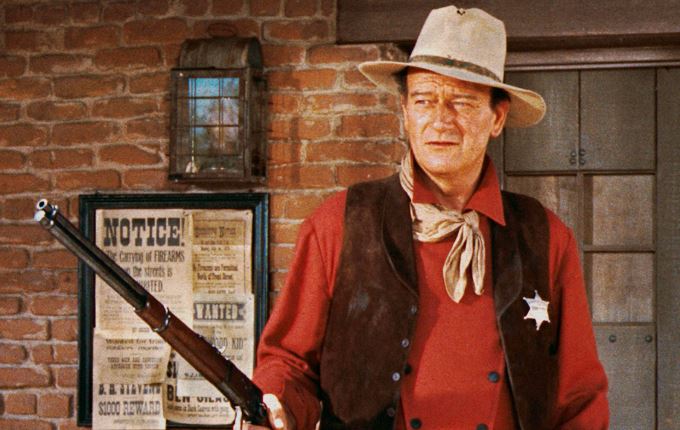In 1972, New Hollywood pioneer Peter Bogdanovich pitched a unique western to Warner Brothers. Fresh off directing The Last Picture Show, based on Larry McMurtry’s 1966 novel, he wanted to collaborate with the author on the script. Warner commissioned the screenplay, envisioning it as a comedy about ageing cowboys, with Bogdanovich hoping to cast John Wayne in the lead. However, the Duke baulked at the idea, and the film was never made—though McMurtry would later reshape the concept into a key part of the magnum opus he became best known for.
The origin of the movie Wayne steadfastly refused to make goes back to Bogdanovich and McMurtry’s meeting at the Fontainebleau Hotel in Miami Beach. They were overlooking the Olympic-sized swimming pool where Bogdanovich’s girlfriend, Last Picture Show star Cybill Shepherd, was doing laps. McMurtry, a good old-fashioned Texas boy who was incongruous in these ritzy surroundings, drawled, “So, what kind of western do you want to make?”
Bogdanovich told Texas Monthly that he informed McMurtry, “I wanted John Wayne, Jimmy Stewart, Henry Fonda, Cybill, the Clancy Brothers, and so on. I said it needed to be a trek: They start somewhere, they go somewhere.” McMurtry suggested the journey be on horseback instead of moving cattle and that the characters start at the Rio Grande and go north. So far, so standard western—but then Bogdanovich revealed McMurty’s next suggestion was what set their prospective movie apart.
“We started talking about the characters,” Bogdanovich explained. “Larry said they could have a pig farm; that would be funny. I said, ‘Yeah, Duke Wayne and Jimmy Stewart with a pig farm would be funny.’”

While spitballing about which archetypes each of their three leads could play, Bogdanovich and McMurtry settled on Fonda being the most mysterious. The director noted that Fonda “always had a slightly ambiguous quality, so he became the slick one, the one you wondered, ‘Was he a good guy or a bad guy?’”
Stewart would be the one with the strongest connection to the land, and they wanted to name him “Augustus” – purely because they chuckled at the idea of Stewart saying, “Augush-tush.” As for the Duke, though, Bogdanovich and McMurtry revealed, “Wayne’s character was always in charge. But we sent him up quite a bit.”
Already, it’s clear that this wouldn’t have been the same kind of western that Wayne made a career on. This story would have been about old men past their prime, and it would have taken the opportunity to poke affectionate fun at the stoic, heroic image Wayne always portrayed in his movies. As screenwriter Stephen Harrigan put it, “In McMurtry’s script, these guys are tramps, stalled out completely, just gabbing on the porch.”
However, anyone with even a passing knowledge of Wayne’s work and personality would probably get nervous reading this description of the movie Bogdanovich and McMurtry wanted to call Streets of Laredo. You see, Wayne was never known as an actor with much of a sense of humour, and it’s difficult to imagine him agreeing to make fun of himself. Initially, in fact, this was the response from all three leading men, with McMurtry admitting, “The draft was welcomed by the studio, but not the three actors.”
Over time, though, Stewart and Fonda came around to the idea, with McMurtry suggesting it was “because they weren’t working that much” at the time. On the other hand, the Duke never had a change of heart. “Wayne was working right up until he dropped, but he didn’t like it, and he wouldn’t do it,” McMurtry shrugged.
Overall, it wasn’t surprising to Bogdanovich and McMurtry, but it was certainly disappointing. They offered Wayne the chance to do something he’d never done before, but it would have also been a huge risk for the iconic star. “John Wayne wasn’t going to lend himself to a total critique of the genre he had been working in for forty years,” University of Texas professor Don Graham told Texas Monthly. “He wasn’t going to make Blazing Saddles“.
The story did have a happy ending, though. Even though this incarnation of Streets of Laredo died at the hands of an immovable Duke, McMurtry reworked elements from the screenplay into a 1993 novel. This version of Streets of Laredo was the second part of his Lonesome Dove epic, a series of four books that serve as the author’s ultimate statement on the western genre.
